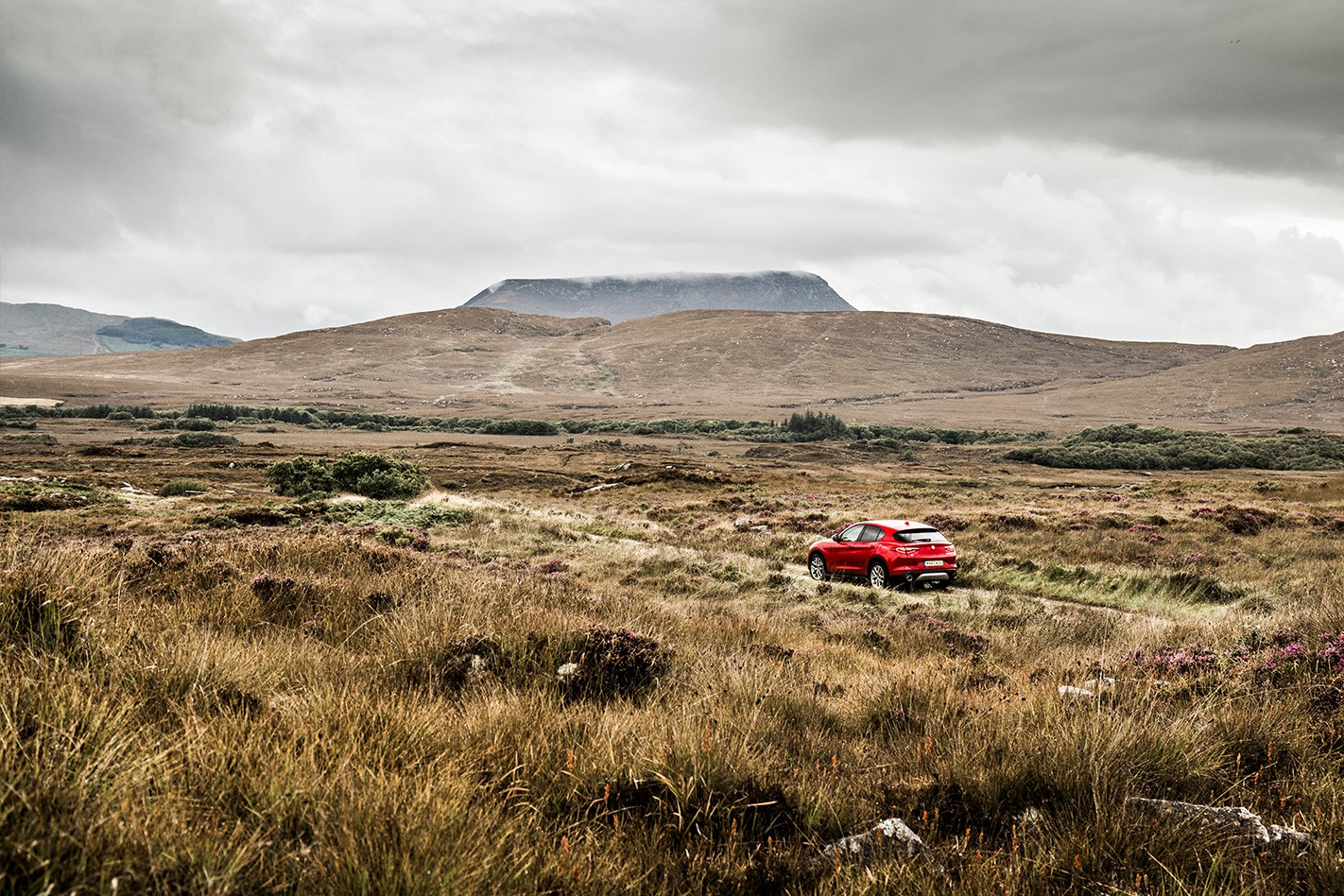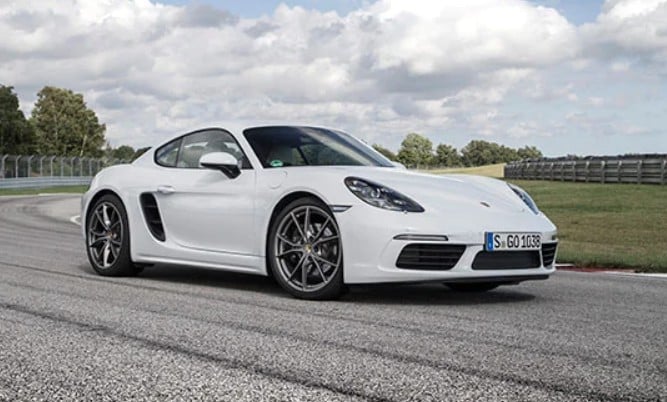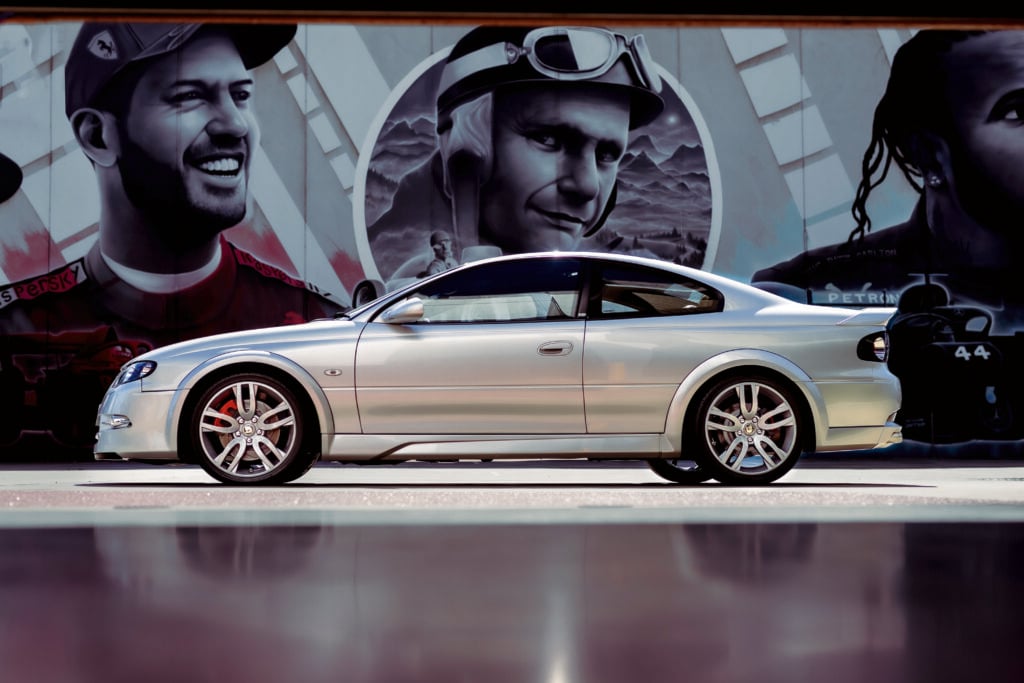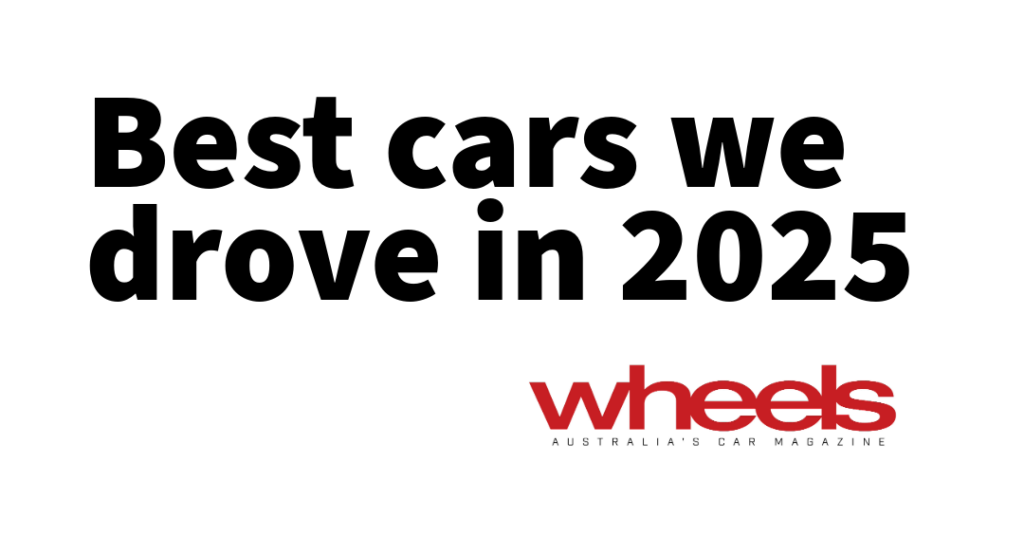WITH the exception of a long bout with terminal illness, it’s unlikely that you’ll know how you’re going to meet your maker.
A cerebral aneurysm? King hit outside a kebab shop? Crushed, Donnie Darko style, by a falling jet engine? It’s impossible to see these things coming.
Just as it was impossible for me to predict the four-metre-wide combine harvester that decided to play chicken with my bright red Alfa Romeo Stelvio on a cramped rural road in Northern Ireland. This country, for so long the United Kingdom’s problem child, is full of surprises.
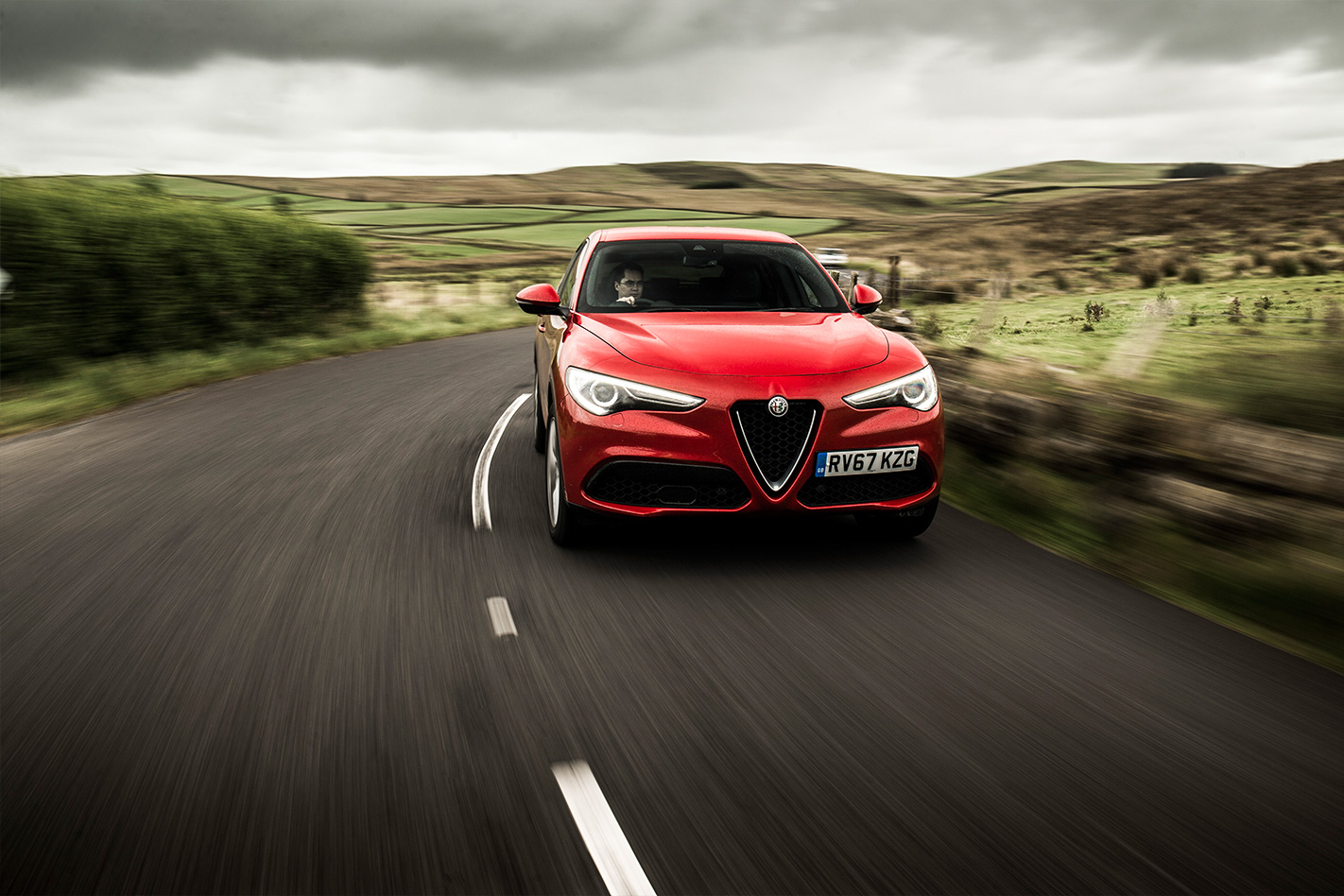
Now, when you think of go-to driving destinations in the United Kingdom, one place comes to mind – Wales. The rugged windswept landscape of the Welsh countryside is seemingly the default backdrop of hundreds of Limey car reviews on YouTube, and for good reason – the curves are mega, and the enforcement of speed seemingly non-existent.
But Northern Ireland offers an alternative that’s packed with just as much driving joy – not something we were expecting. Another thing we weren’t anticipating: just how similar Northern Irish roads feel to those Down Under. Ignore the road signs and you’d swear you were rocketing along a Victorian or NSW country backroad … except that someone’s messed with the saturation settings and the scenery has turned an unfeasibly lurid green. It’s not a bad place to test a car. But nobody warned me about the farmers.

High praise from a bloke who just parked a Rolls-Royce Phantom, and a comment that’d no doubt puff up the chests of the designers at Alfa’s Centro Stile. Built in Italy and named for that country’s most famous mountain pass, the Stelvio feels impossibly romantic among the drab diesel hatchbacks and sedans that populate Northern Irish roads.
Especially in Belfast. This place was the epicentre of Northern Ireland’s decades-long struggle with domestic terrorism, and is the starting point of our journey. The Alfa’s bright red paint and glamorous Italian styling are at odds with the grey stucco houses, end-to-end nimbostratus and the industrial bleakness of Northern Ireland’s capital.
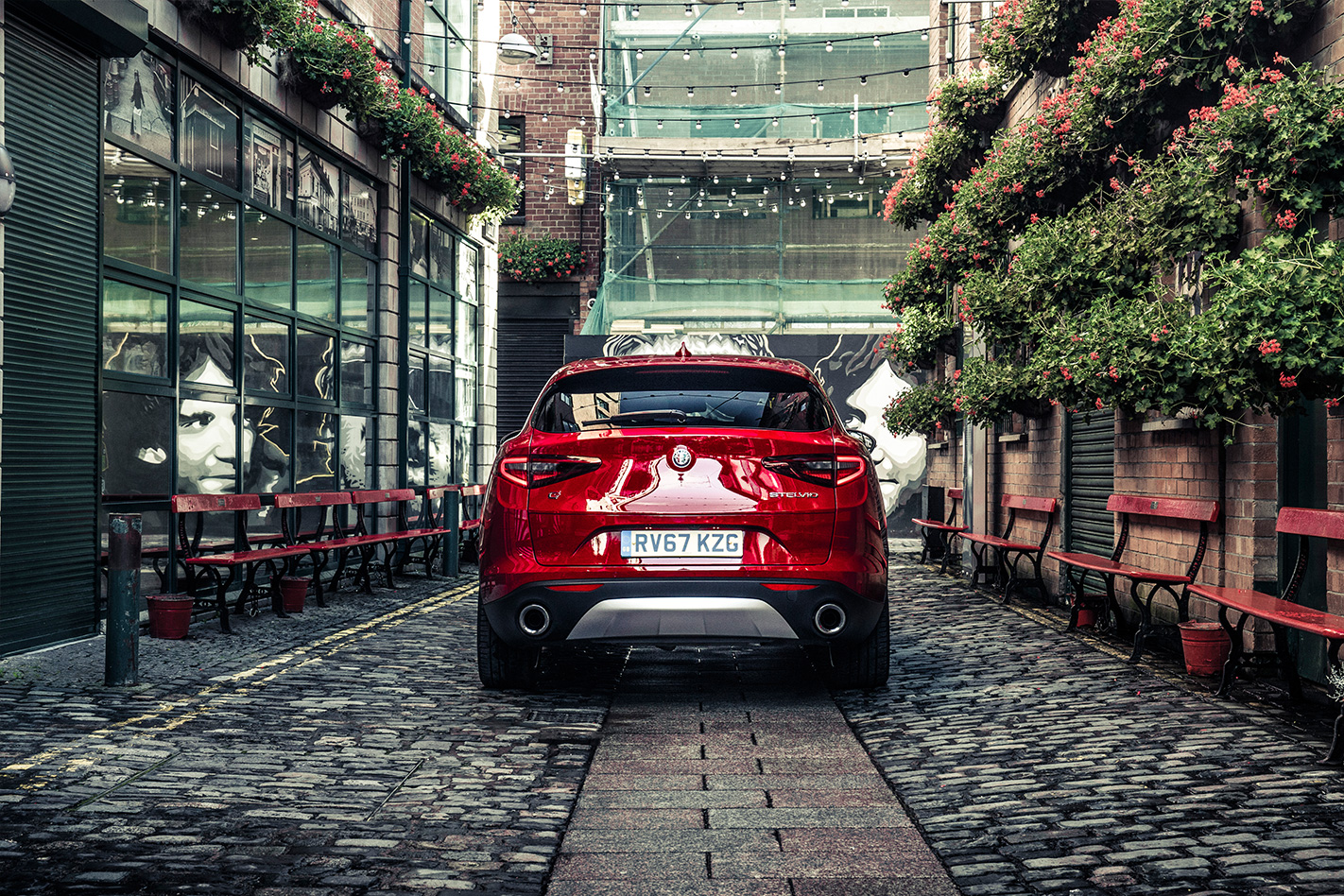
Keys in hand, we don’t hang around in Belfast. More enticing roads beckon, and I point the Stelvio towards Ireland’s north-east coast. There, between Carrickfergus and Ballycastle specifically, we hope to find delectable ribbons of tarmac sandwiched between green hills, abrupt cliffs and the North Channel. And we do, but here at the same latitude as northern Newfoundland there’s no shortage of weather … and slow-moving tourists.
The Stelvio deals admirably with the former. All Stelvios destined for Australia will utilise Alfa Romeo’s Q4 all-wheel-drive underpinnings which may sound a bit too safe ’n’ secure, but it gives preference to the rear axle when figuring out where to send torque and most of the time it feels rear-driven. The front differential is there as a safety net, but even on a soggy and cold Irish morning it was difficult to provoke a loss of traction.
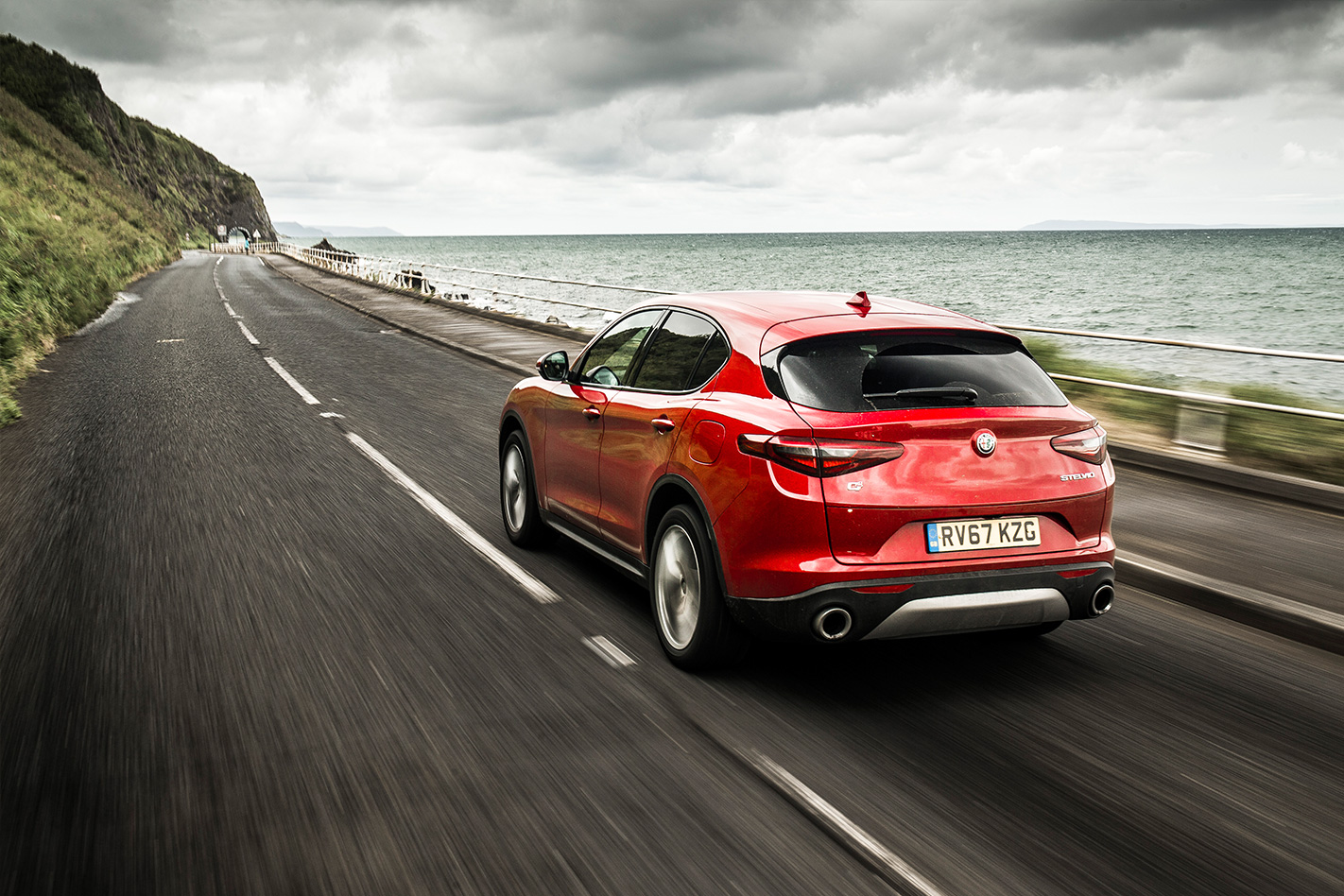
We’re losing time and worsening weather coming from the Atlantic is destroying snapper Thompson’s photo ops, so we hang a left at Glenarm and turn inland, literally towards greener pastures.
Away from the coast, the roads open up and the scenery morphs from black cliffs to rolling hills. With more opportunities to squeeze its alloy-faced accelerator, the Stelvio shows its mettle. It’s more sports car than sports utility vehicle.

While a GLC feels benign and most at home projecting a preening brand equity at any opportunity, the Stelvio practically begs to be whipped hard. Its super-fast 12:1 rack ratio is well-suited to dispatch Ireland’s flowing country roads, and its pointy and grippy front end gives the confidence necessary to punt it hard without fear of flinging it into a hedge.
There are enough aural theatrics to enhance the mechanical experience too. The turbo four pot has a pleasing growl, the long metal shift paddles make a satisfying ‘click’ with every pull and the transmission dials up flamboyant rev matches on downshifts, and a pronounced ignition cut on upshifts.
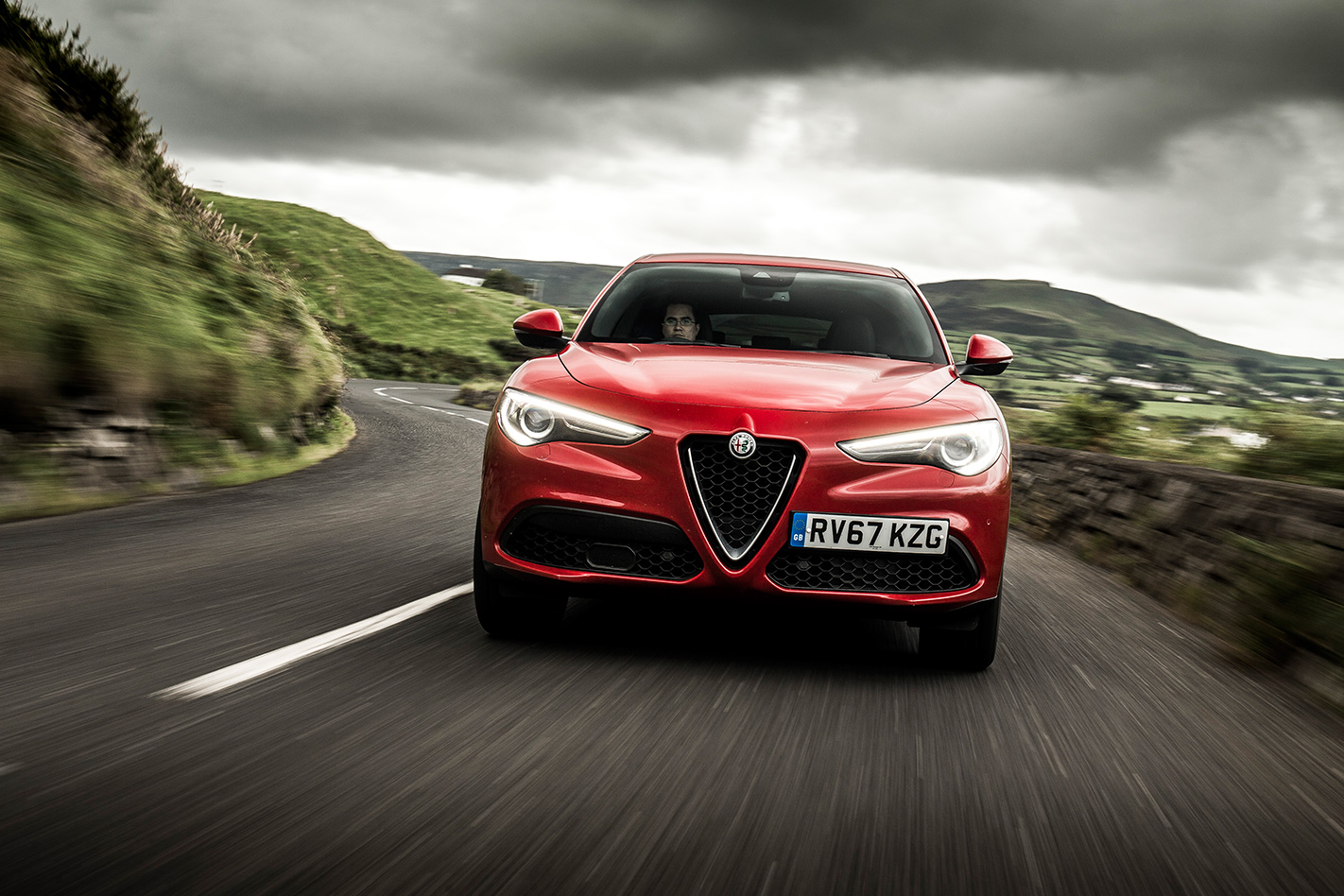
But like Porsche, Alfa Romeo has turned out a sports utility that augments rather than exploits its heritage.
The long curves between Glenarm and the inland town of Ballymena provide plenty of opportunity to appreciate that capability, and away from the tourist routes the traffic changes markedly. There are bugger-all vehicles on roads like this, and when you do come across another motorist, it’s more likely to be a local who knows the roads and drives like a demon – regardless of whether they’re in an MX-5 or a Transit.
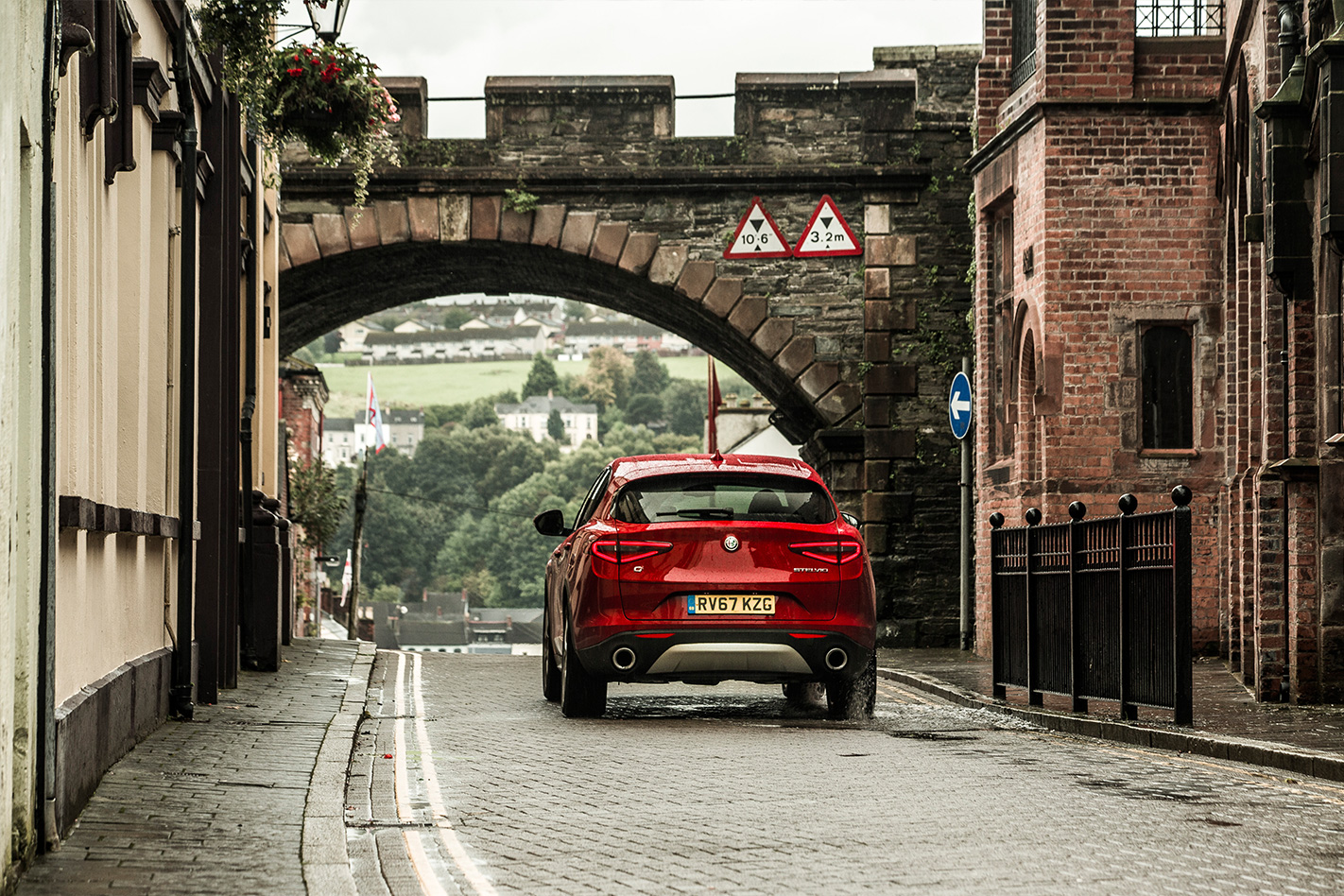
While Belfast is trying to paint over the pricklier parts of its modern history, the evidence of Northern Ireland’s Troubles are harder to erase in Derry, its second city, which sits nestled up to the border with the Republic of Ireland.
An otherwise charming medieval walled city, Derry still bears the marks from decades of sectarian fighting between Catholic republicans and Protestant loyalists that began in the late 1960s and only ended in 1998 (see sidebar, p101). Rolling through Derry’s notorious Bogside, the many murals tell a story of Catholic oppression under British rule – while the nearby IRA Prisoners Welfare Association bears an intimidating mural of its own showing two balaclava-wearing blokes, one toting a military rifle, the other an RPG, with the sinister message ‘UNFINISHED REVOLUTION’ above them both.
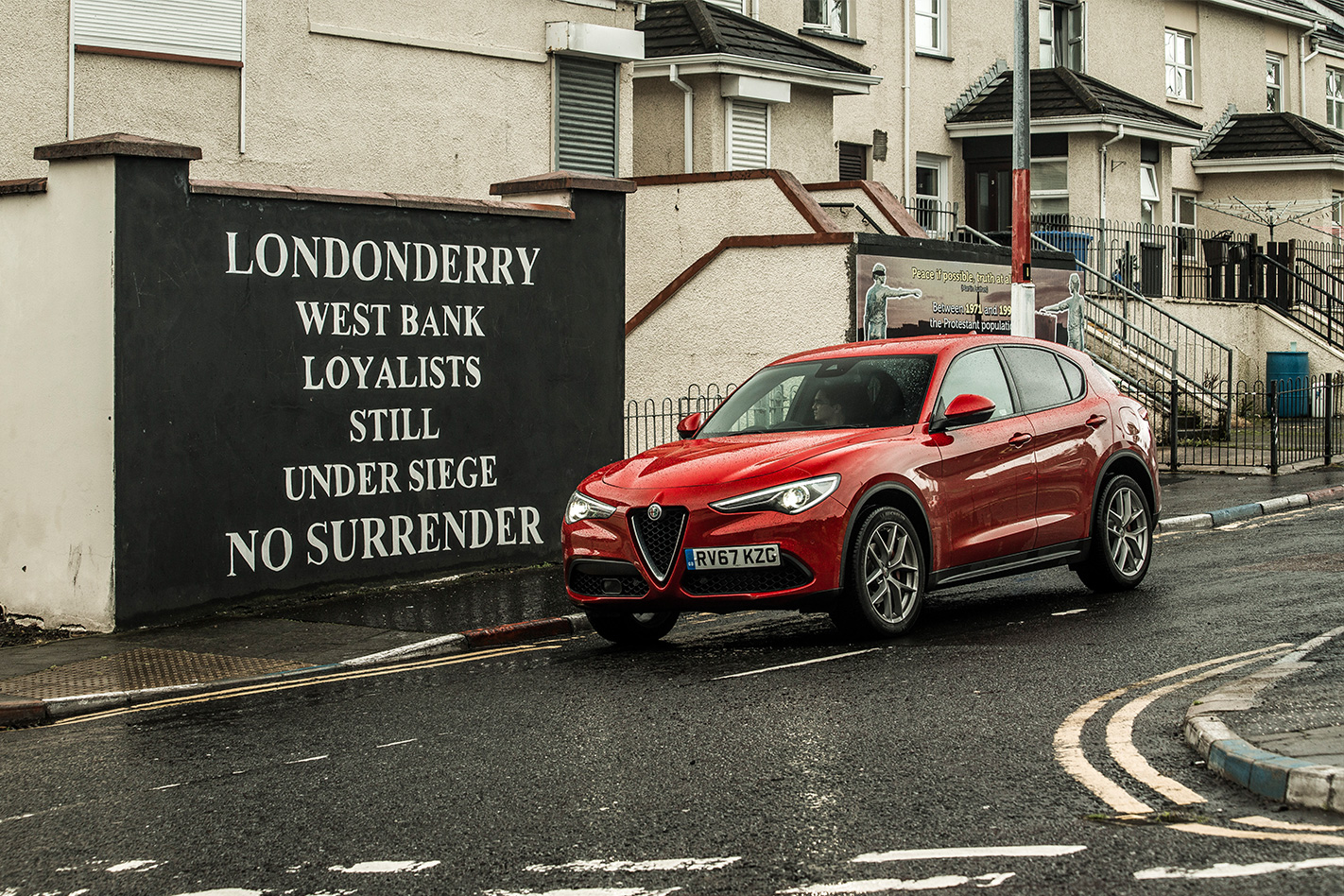
Grim, yet while it’s tempting to hang around and absorb the grittier aspects of Northern Ireland’s constitutional heritage, we need to press on. I’m told there’s a national park west of Derry that’s a spectacular example of Irish geography, and I’ve been itching to take the Stelvio somewhere that will put dirt or gravel under its all-terrain tyres. Y’know, because it’s an SUV apparently, and it’s supposed to be good at that kind of stuff.
We cross the border into the Republic and the roads change; coarser chip and lumpier. The roads here tend to follow the terrain more closely than they do in the UK’s patch of Ireland – either that, or the terrain is simply wilder to begin with.
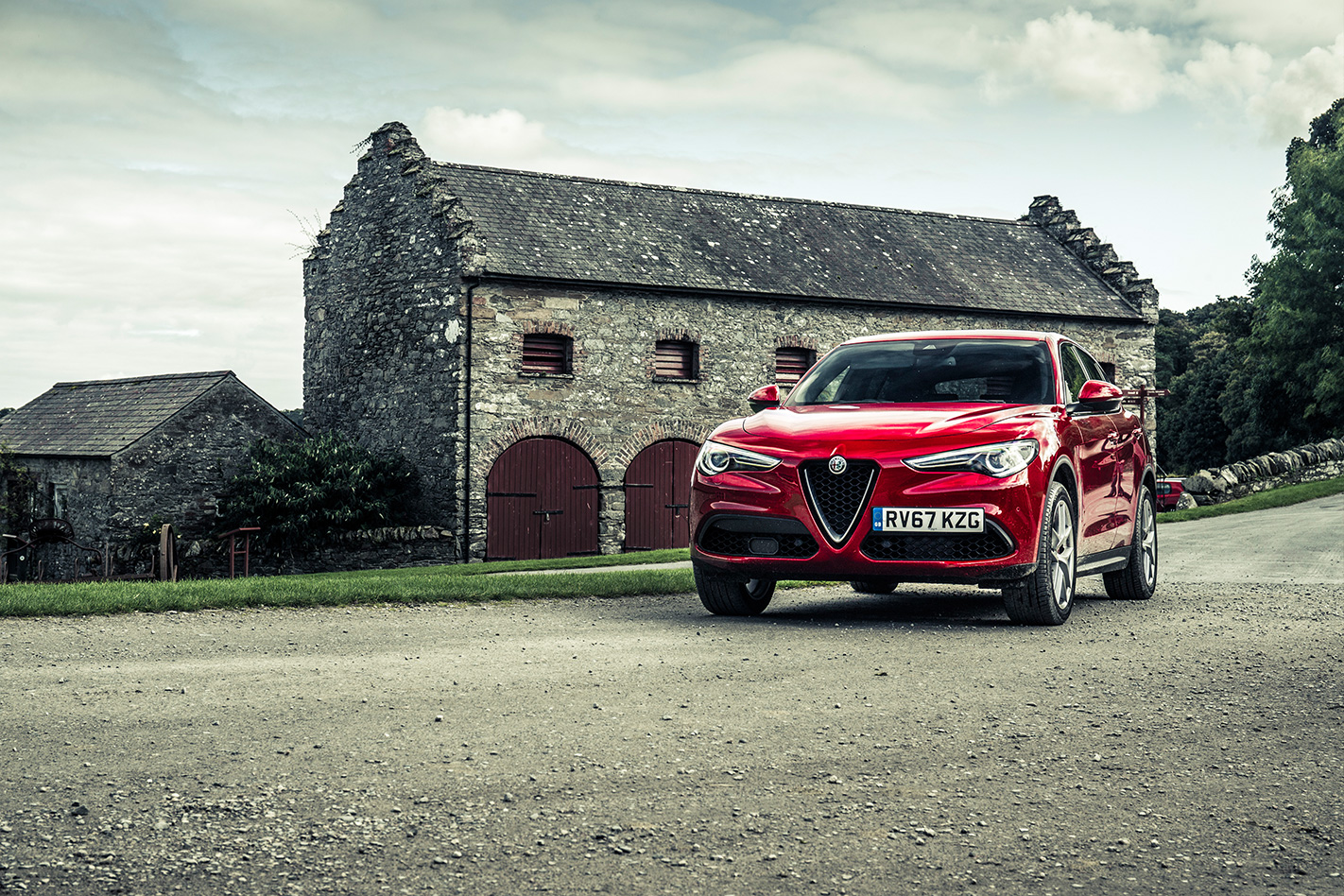
Covered by grey rock and yellow grass, and with very little in the way of human habitation, it’s like a different planet compared to the green, leafy and populated countryside we’ve travelled through to get here. Beautiful, rugged, yet slightly foreboding, it’s little wonder that Ireland has inspired the settings of many works of fantasy, from The Chronicles of Narnia through to Game Of Thrones.
And it’s here, at long last, that we find the opportunity to say goodbye to tarmac. Unless you’re trespassing on someone’s farm (perhaps to sabotage their combine harvester in retribution), it seems unpaved roads are a rare thing in this part of the Emerald Isle.
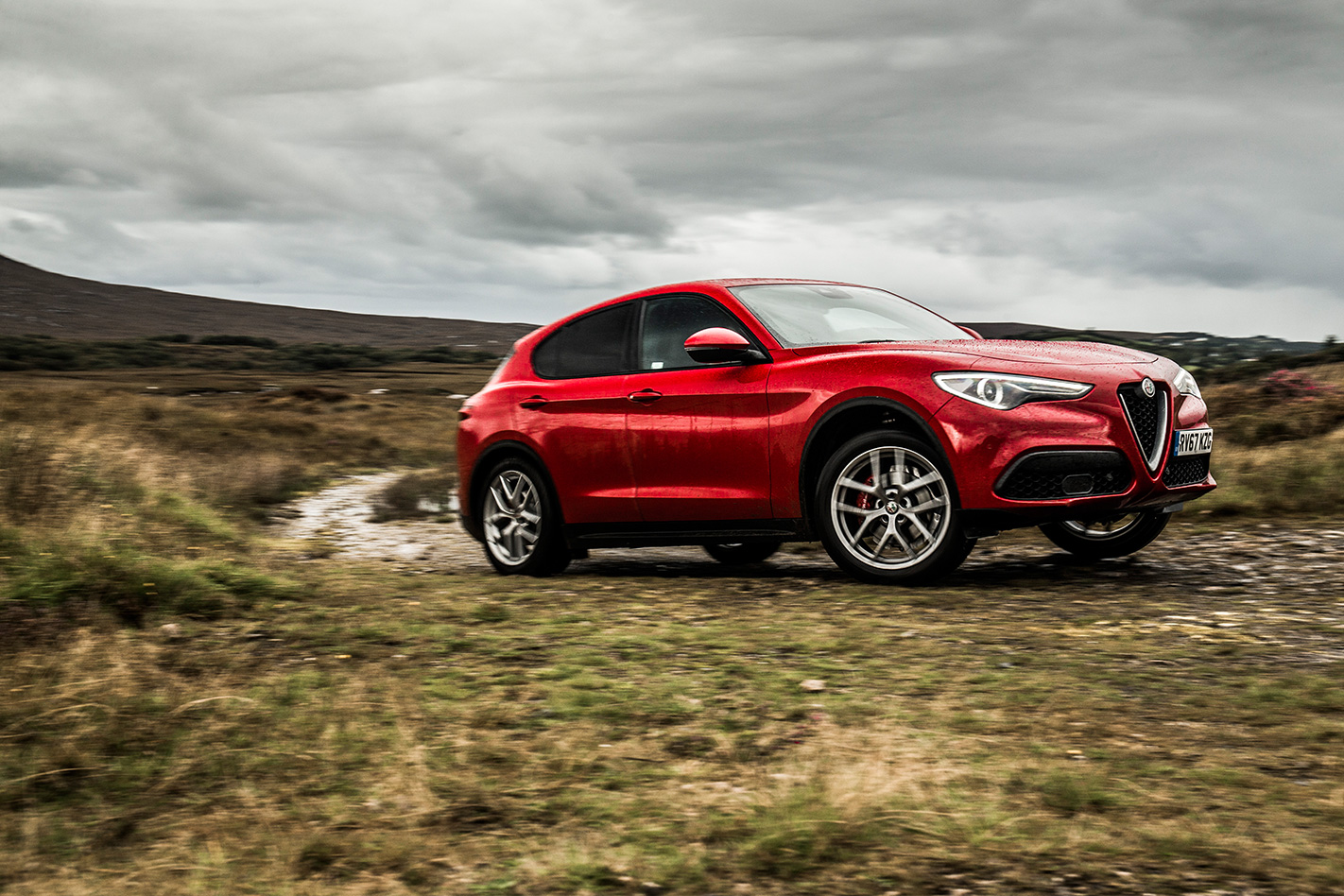
No matter. This country – whether you’re talking about the Republic or that chunk of the UK in the north east – is breathtaking in its natural beauty, and that’s not something I expected to discover. It makes it easy to forget the politics.
The Stelvio, meanwhile, makes it easy to explore a country like this. I can think of few cars that blend driver satisfaction, load-lugging capability and all-weather, all-surface grip so well. The fact it’s genuinely gorgeous, in the words of our helpful Belfast doorman, is icing on the cake.
And just like that kamikaze combine harvester, I didn’t really see that coming.
